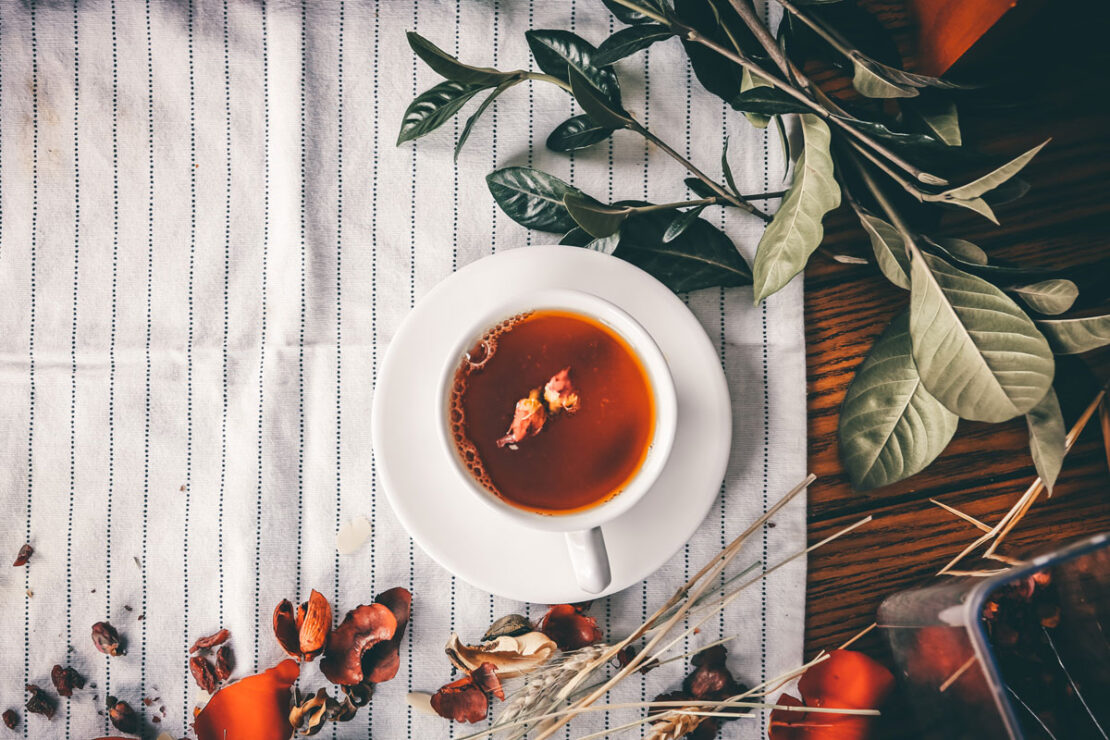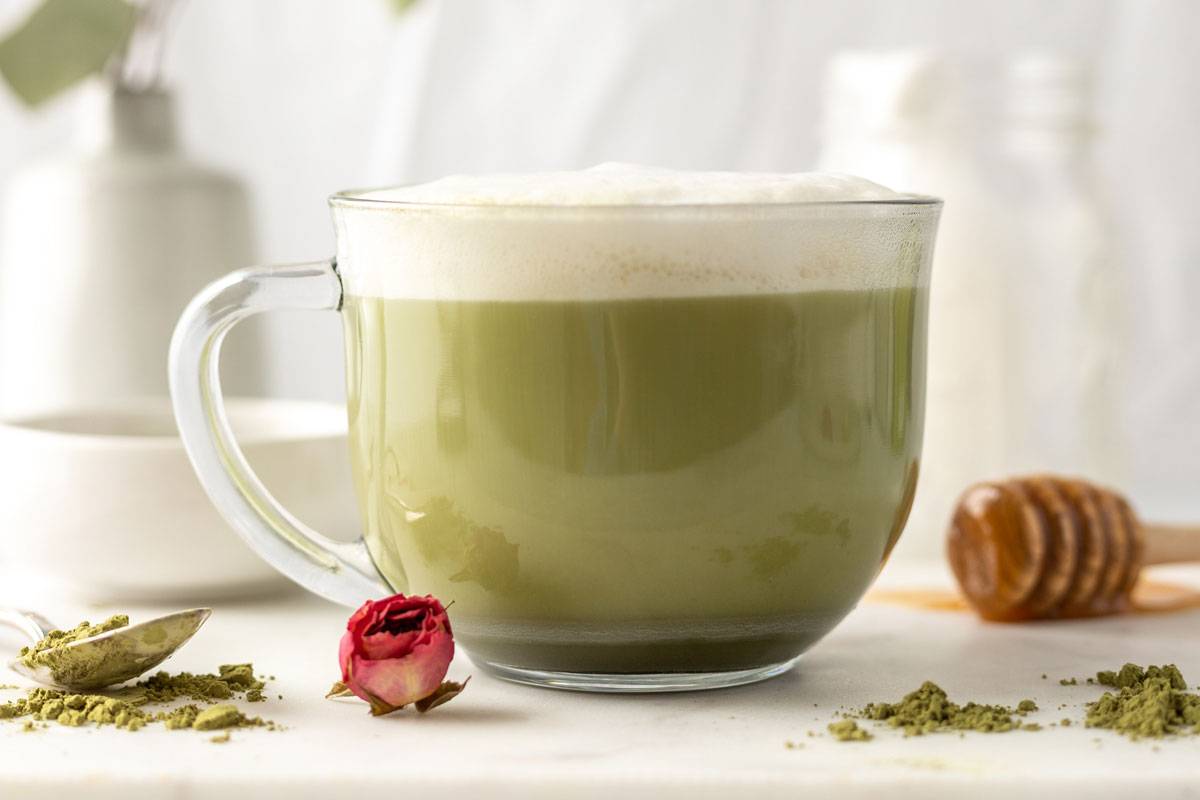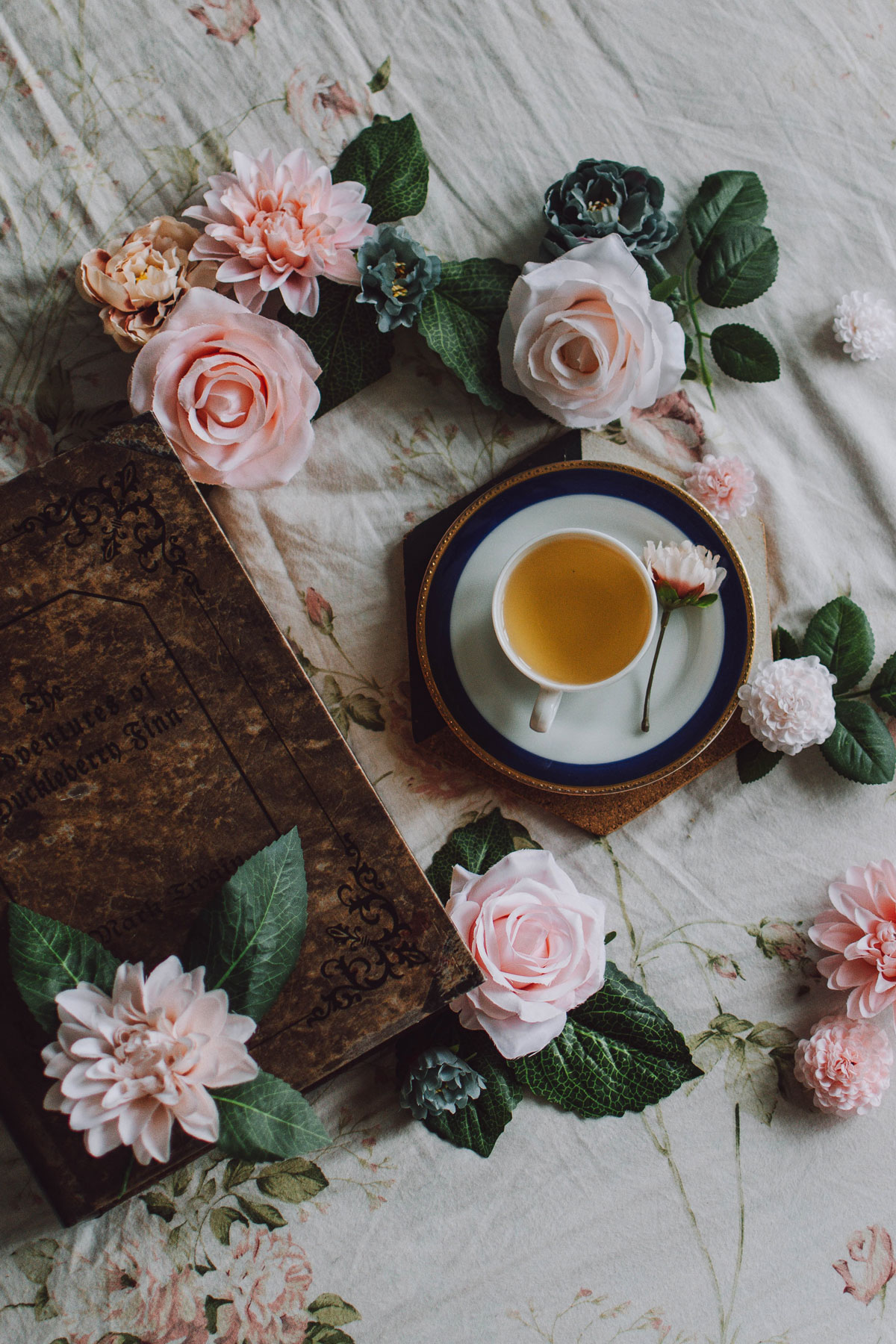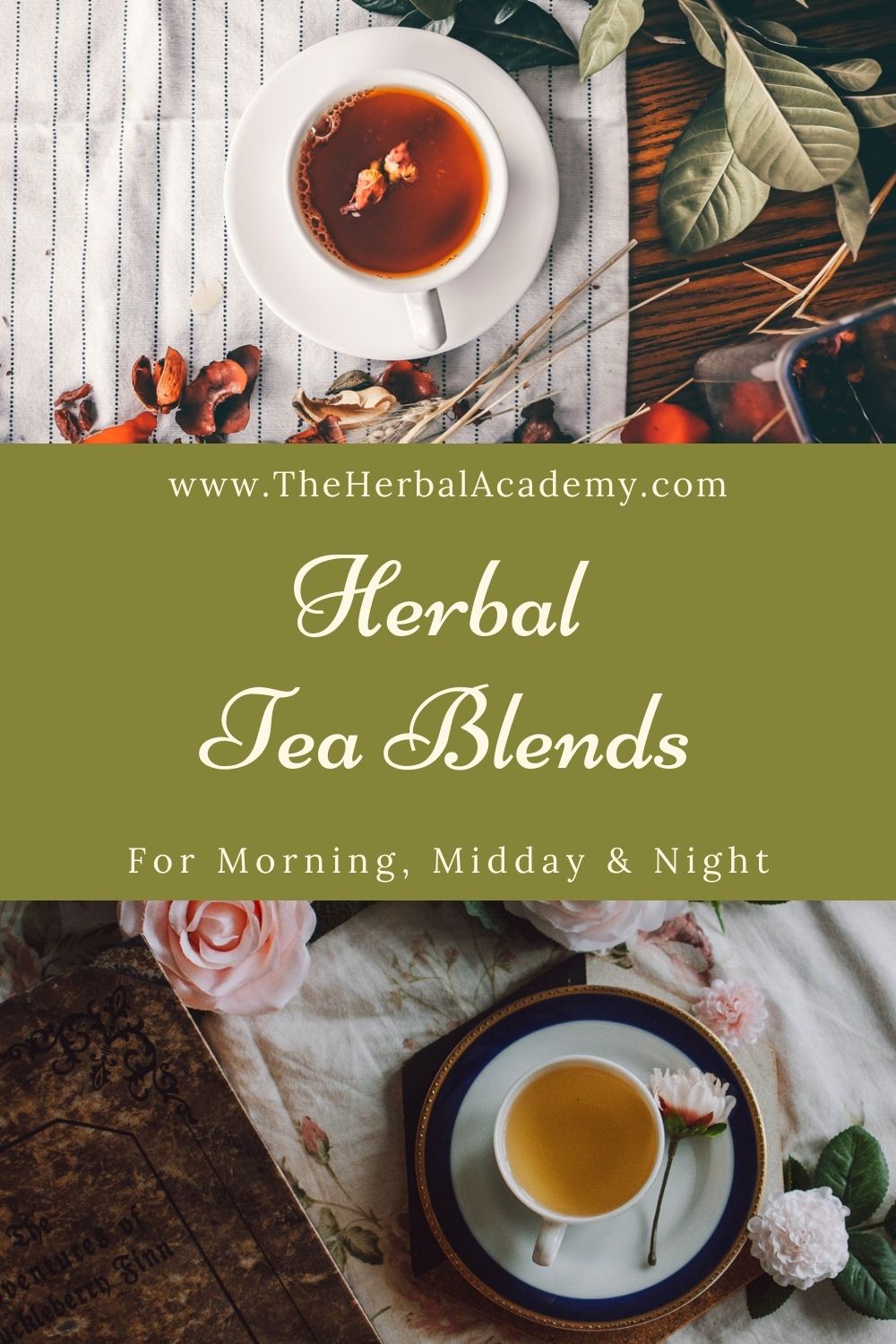
Herbal Tea Blends for Morning, Midday, and Night
Timing is everything. This well-worn saying couldn’t be more true when it comes to herbal tea blends. The Sanskrit word kala refers to time or timing, and desa to place. According to Ayurveda, harmonious living isn’t just about what; it is also about when, how, and where. When it comes to what we put into our bodies, the timing of how and when we partake can be as significant as the foods and beverages we choose. Here I offer you four different herbal tea blends and suggestions on the best time of day to enjoy them.
Herbal Tea Blends for the Morning
A natural early riser, I am more a lark than an owl, and I love the freshness of the morning. Whether or not you adore the morning, a well-brewed cup of tea can certainly make the early hours a little sweeter. Also, concocting a tasty tea can become a lovely start-of-the-day ritual. Six a.m. to 10 a.m. is considered a time of day in which the influences of kapha dosha are strong. The presence of kapha dosha can give rise to feelings of lethargy, slowness, and grogginess. The following two morning herbal tea blends are uplifting and energizing without being overly stimulating. Also, for my masala chai recipe, I suggest a caffeine-free option.

Adaptogenic Matcha Latte
Adapted from Banyan Botanicals
This adaptogenic latte combines the best of both worlds. Matcha contains caffeine and is mildly stimulating. Ashwagandha (Withania somnifera) root is an ayurvedic rasayana (deeply rejuvenating herb) and is also considered an adaptogen. This herbal tea blend offers gentle stimulation along with nourishment from the ashwagandha, milk, and spices. Yield: 1 medium-sized mug.
2 ounces heated water
1 teaspoon matcha powder
1 teaspoon ashwagandha (Withania somnifera) root powder
1 cup full-fat milk (grass-fed cow’s milk, oat, coconut, or almond milk work well)
1 pinch of cinnamon (Cinnamomum spp.zeylanicum) bark powder
Maple syrup or honey to taste
1 pinch cardamom (Elettaria cardamomum) seed powder
- Heat water in a small saucepan until steam appears.
- Add matcha and ashwagandha powders to a medium-sized mug. Pour in water and whisk vigorously until the powders are blended smooth.
- Use the small saucepan to heat milk until small bubbles barely start to appear.
- Add milk to the tea and ashwagandha mixture. Add a pinch of cinnamon and whisk until smooth or blend all ingredients in a glass blender.
- Sweeten to taste with honey or maple syrup.
- Top with a pinch of cardamom powder.

Greta’s Masala Chai
The chai in India is truly incomparable. It is creamy, sweet, strong, and aromatic. Served in small ceramic or glass teacups, it is worlds away from the chai served in most American cafes and coffee shops. I don’t know that I will ever be able to fully replicate its aromatic magnificence, but this is my humble attempt at creating a good cup of flavorful and delicious masala chai. I have learned through trial and error that the success in making a good cup of chai lies largely in the process. Also, good quality spices make a big difference. This is how I make my chai every morning. Yield: 1 medium-sized mug or 2 small teacups.
3/4 cup water
3/4 cup full-fat milk (grass-fed cow’s milk, oat, coconut, or almond milk work well)
1 tablespoon CTC (cut, torn, curled) black Assam tea or tulsi (Ocimum tenuiflorum) leaves
1/2 teaspoon ginger (Zingiber officinale) rhizome powder
1/4 teaspoon cinnamon (Cinnamomum spp.) bark powder
1/4 teaspoon cardamom (Elettaria cardamomum) seed powder
1/8 teaspoon black pepper (Piper nigrum) fruit powder
A pinch of clove (Syzygium aromaticum) fruit powder
Raw sugar, honey, or maple syrup to taste
- In a small saucepan, add the water, milk, and spices.
- Bring to the very edge of boiling. Small bubbles will start to appear. Add the black tea (for a caffeinated version) or tulsi leaves (for a caffeine-free version), cover, and remove from heat.
- Steep for 2-5 minutes. Dust with a pinch more of cardamom. Strain, sweeten, and sip!
Masala Chai Tips and Substitutions
- CTC Assam is sold in most Indian markets, as well as specialty tea shops and online suppliers. However, if you have a hard time tracking some down, you can substitute whole leaf Assam, Darjeeling, or English breakfast tea. In this case, use 2 tablespoons of loose leaf tea.
- Using powdered spices is easy and convenient. However, you can add a bit of freshly grated ginger rhizome to this recipe, as well as a few crushed cardamom pods. Add these whole spices at the same time as the powdered spices. For more chai recipes, see my post How to Make the Perfect Cup of Chai for Your Dosha.
Herbal Tea Blend for Midday
Be Cool Pitta-Pacifying Tea
Adapted from Vishnu’s Kitchen by Vishnu Dass
Keep cool with this herbal tea blend for midday. Aimed at balancing pitta dosha, this combination soothes the nerves and gently stimulates digestion. Also, 10 a.m. -2 p.m. is considered to be a time of day in which pitta dosha is most prominent, so if you find yourself feeling fiery, overly focused, or agitated, try a cup of this cooling herbal tea blend before or after lunch. This blend is caffeine-free and balancing for pitta-type digestive imbalances, such as acid reflux and burning indigestion (Dass, 2014). Yield: 1 quart of tea.
1 tablespoon cumin (Cuminum cyminum) seeds
1 tablespoon coriander (Coriandrum sativum) seeds
1 tablespoon fennel (Foeniculum vulgare) seeds
3-4 crushed cardamom (Elettaria cardamomum) seed pods
1 teaspoon dried peppermint (Mentha piperita) leaves
1 tablespoon dried chamomile (Matricaria chamomilla) flowers
Several dried rose (Rosa spp.) petals
1 quart water
- In a medium-sized saucepan, bring the water to a boil and add the cumin, coriander, and fennel seeds, as well as the cardamom pods.
- Reduce heat to low, cover, and simmer for 5 minutes.
- Remove from heat. Add peppermint, chamomile, and rose petals. Cover and steep for 5 more minutes.
- Strain and enjoy warm or cool.

Herbal Tea Blend for Night
Evening Bliss Tea
Adapted from the California College of Ayurveda
This herbal tea blend is full of nerve-soothing plant allies. Perfect for the evening, late afternoon, or any time your nervous system needs a little smoothing out, the overall cool energy of this tea makes it suitable for pitta dosha. Furthermore, this Evening Bliss Tea features gotu kola (Centella asiatica), one of the most highly revered pitta-pacifying nervines, so this blend supports a calm and cool mind. However, it may also be quite helpful for vata-types who tend toward nervousness and sleep troubles. I suggest preparing a large jar to have on hand, and then scooping out 1-2 tablespoons of the dried tea as needed. This recipe specifies the amounts in parts. A part can be anywhere from a teaspoon to a ¼ cup.
8 parts gotu kola (Centella asiatica) dried leaf
4 parts rose (Rosa spp.) dried petals
2 parts fennel (Foeniculum vulgare) seeds
1 part lavender (Lavandula spp.) flowers
1 part skullcap (Scutellaria lateriflora) dried aerial parts
1 part lemon balm (Melissa officinalis) dried leaf
1 part chamomile (Matricaria chamomilla) dried flowers
- Combine all dried in ingredients, mix, and store in a large glass mason jar or similar container. Keep closed and out of direct sunlight.
- Any time you are ready for a mug, scoop out 1-2 tablespoons of dried herbal tea blend. Steep in 12-16 ounces just-boiled water for 20 minutes, keeping covered.
- Strain and enjoy warm or cool.
In Closing,
Whether the world of homemade herbal tea blends is familiar or fresh to you, I hope that I have provided some creative inspiration for your tea-time—be it morning, midday, or night. Making your own herbal tea blends is a fun and simple way to experiment with herbs in the kitchen, and also a wonderful way to savor and celebrate each distinct time of day.

REFERENCES
Dass, V. (2014). Vishnu’s kitchen: A practical guide to ayurvedic cooking. Asheville, NC: Blue Lotus Ayurveda.
Making Herbal Medicines Workshop. California College of Ayurveda. Nevada City, CA. August, 2016.








